The Anti-Proliferation, Cycle Arrest and Apoptotic Inducing Activity of Peperomin E on Prostate Cancer PC-3 Cell Line
Abstract
1. Introduction
2. Results
2.1. Effects of Peperomin E on PC-3 Cell Proliferation
2.2. Effects of Peperomin E on Cell Apoptosis Inducement
2.3. Effects of Peperomin E on PC-3 Cell-Cycle Distribution
2.4. Effect of Peperomin E on the Expression Levels of Bax, Bcl-2, Caspase-3 and Cleaved-Caspase-3 in PC-3 Cells
3. Discussion
4. Materials and Methods
4.1. Chemicals
4.2. Cell Culture
4.3. Cell Proliferation Assay
4.4. Hoechest 33258 Staining Assay
4.5. Annexin V and PI Staining for Apoptosis Detection
4.6. Flow Cytometric Analysis of DNA Cell Cycle
4.7. Western Blot Analysis
4.8. Statistical Analysis
Author Contributions
Funding
Conflicts of Interest
References
- Global Burden of Disease Cancer Collaboration; Fitzmaurice, C.; Akinyemiju, T.F.; Al Lami, F.H.; Alam, T.; Alizadeh-Navaei, R.; Allen, C.; Alsharif, U.; Alvis-Guzman, N.; Amini, E.; et al. Global, Regional, and National Cancer Incidence, Mortality, Years of Life Lost, Years Lived With Disability, and Disability-Adjusted Life-Years for 29 Cancer Groups, 1990 to 2016: A Systematic Analysis for the Global Burden of Disease Study. JAMA Oncol. 2018, 4, 1553–1568. [Google Scholar]
- Han, S.J.; Zhang, S.W.; Chen, W.Q.; Li, C.L. Analysis of the status and trends of prostate cancer incidence in China. Chin. Clin. Oncol. 2013, 18, 330–384. [Google Scholar]
- Maráz, A.; Boér, K.; Dankovics, Z.; Dank, M.; Lahm, E.; Petrányi, Á.; Révész, J.; Ruzsa, Á.; Szûcs, M.; Valikovics, A.; et al. Experience with cabazitaxel therapy for patients with metastatic castrate resistant prostate cancer in Hungary. Magyar Onkológia 2017, 61, 353–360. [Google Scholar] [PubMed]
- Lu, X.; Zhang, W.W.; Cheng, X.H.; Wang, H.G.; Yu, D.Y.; Feng, B.M. Advances on the secolignans compounds in natural products. J. Shenyang Pharm. Uni. 2014, 31, 922–926. [Google Scholar]
- Wu, J.L.; Li, N.; Hasegawa, T.; Sakai, J.; Mitsui, T.; Ogura, H.; Kataoka, T.; Oka, S.; Kiuchi, M.; Tomida, A.; et al. Bioactive secolignans from Peperomia dindygulensis. J. Nat. Prod. 2006, 69, 790–794. [Google Scholar] [CrossRef]
- Tsutsui, C.; Yamada, Y.; Ando, M.; Toyama, D.; Wu, J.L.; Wang, L.; Taketani, S.; Kataoka, T. Peperomins as anti-inflammatory agents that inhibit the NF-kappaB signaling pathway. Bioorg. Med. Chem. Lett. 2009, 19, 4084–4087. [Google Scholar] [CrossRef]
- Zhang, G.-L.; Li, N.; Wang, Y.-H.; Zheng, Y.-T.; Zhang, Z.; Wang, M.-W.; Na Li, N. Bioactive Lignans fromPeperomia heyneana. J. Nat. Prod. 2007, 70, 662–664. [Google Scholar] [CrossRef] [PubMed]
- Govindachari, T.; Kumari, G.K.; Partho, P. Two secolignans from Peperomia dindigulensis. Phytochemistry 1998, 49, 2129–2131. [Google Scholar] [CrossRef]
- Wu, J.L.; Li, N.; Hasegawa, T.; Sakai, J.; Kakuta, S.; Tang, W.; Oka, S.; Kiuchi, M.; Oqura, H.; Kataoka, T.; et al. Bioactive tetrahydrofuran lignans from Peperomia dindygulensis. J. Nat. Prod. 2005, 68, 1656–1660. [Google Scholar] [CrossRef]
- Xu, S.; Li, N.; Ning, M.M.; Zhou, C.H.; Yang, Q.R.; Wang, M.W. Bioactive compounds from Peperomia pellucida. J. Nat. Prod. 2006, 69, 247–250. [Google Scholar] [CrossRef] [PubMed]
- Cheng, M.-J.; Lee, S.-J.; Chang, Y.-Y.; Wu, S.-H.; Tsai, I.-L.; Jayaprakasam, B.; Chen, I.-S. Chemical and cytotoxic constituents from Peperomia sui. Phytochemistry 2003, 63, 603–608. [Google Scholar] [CrossRef]
- Cheng, L. Chemical constituents and antitumor activity of Peperomia dindygulensis. Dissertation, Academy of Military Medical Science, Beijing, China, May 2005. [Google Scholar]
- Niu, Y.; Altuwaijri, S.; Lai, K.-P.; Wu, C.-T.; Ricke, W.A.; Messing, E.M.; Yao, J.; Yeh, S.; Chang, C. Androgen receptor is a tumor suppressor and proliferator in prostate cancer. Proc. Natl. Acad. Sci. USA 2008, 105, 12182–12187. [Google Scholar] [CrossRef] [PubMed]
- Chen, C.M.; Jan, F.Y.; Chen, M.T.; Lee, T. Peperomins A, B and C, novel secolignans from Peperomia japonica. Heterocycles 1989, 29, 411–414. [Google Scholar] [CrossRef]
- Wang, X.-Z.; Cheng, Y.; Wang, K.-L.; Liu, R.; Yang, X.-L.; Wen, H.-M.; Chai, C.; Liang, J.-Y.; Wu, H. Peperomin E reactivates silenced tumor suppressor genes in lung cancer cells by inhibition of DNA methyltransferase. Cancer Sci 2016, 107, 1506–1519. [Google Scholar] [CrossRef] [PubMed]
- Kasibhatla, S.; Tseng, B. Why target apoptosis in cancer treatment? Mol. Cancer Ther. 2003, 2, 573–580. [Google Scholar] [PubMed]
- Oltersdorf, T.; Elmore, S.W.; Shoemaker, A.R.; Armstrong, R.C.; Augeri, D.J.; Belli, B.A.; Bruncko, M.; Deckwerth, T.L.; Dinges, J.; Hajduk, P.J.; et al. An inhibitor of Bcl-2 family proteins induces regression of solid tumours. Nature 2005, 435, 677–681. [Google Scholar] [CrossRef] [PubMed]
- Wall, N.R.; Mohammad, R.M.; Al-Katib, A.M. Bax:Bcl-2 ratio modulation by bryostatin 1 and novel antitubulin agents is important for susceptibility to drug induced apoptosis in the human early pre-B acute lymphoblastic leukemia cell line, Reh. Leuk. Res. 1999, 23, 881–888. [Google Scholar] [CrossRef]
- Marzo, I.; Naval, J. Bcl-2 family members as molecular targets in cancer therapy. Biochem. Pharmacol. 2008, 76, 939–946. [Google Scholar] [CrossRef]
- Mansoor, T.A.; Ramalho, R.M.; Ramalhete, C.; Ferreira, M.J.U.; Luo, X.; Rodrigues, C.M.P.; Ferreira, M.U. Isoflavones as Apoptosis Inducers in Human Hepatoma HuH-7 Cells. Phytotherapy Res. 2011, 25, 1819–1824. [Google Scholar] [CrossRef]
- Pradeep, A.R.; Suke, D.K.; Prasad, M.V.; Singh, S.P.; Martande, S.S.; Nagpal, K.; Naik, S.B.; Guruprasad, C.N.; Raju, A.P.; Singh, P.; et al. Expression of key executioner of apoptosis caspase-3 in periodontal health and disease. J. Investig. Clin. Dent. 2016, 7, 174–179. [Google Scholar] [CrossRef]
- Kiechle, F.L.; Zhang, X. Apoptosis: biochemical aspects and clinical implications. Clin. Chim. 2002, 326, 27–45. [Google Scholar] [CrossRef]
- Hartwell, L.H.; Kastan, M.B. Cell cycle control and cancer. Science 1994, 266, 1821–1828. [Google Scholar] [CrossRef]
- Kastan, M.B.; Bartek, J. Cell-cycle checkpoints and cancer. Nature 2004, 432, 316–323. [Google Scholar] [CrossRef] [PubMed]
- Carnero, A. Targeting the cell cycle for cancer therapy. Br. J. Cancer 2002, 87, 129–133. [Google Scholar] [CrossRef]
Sample Availability: Samples of the compounds are not available from the authors. |
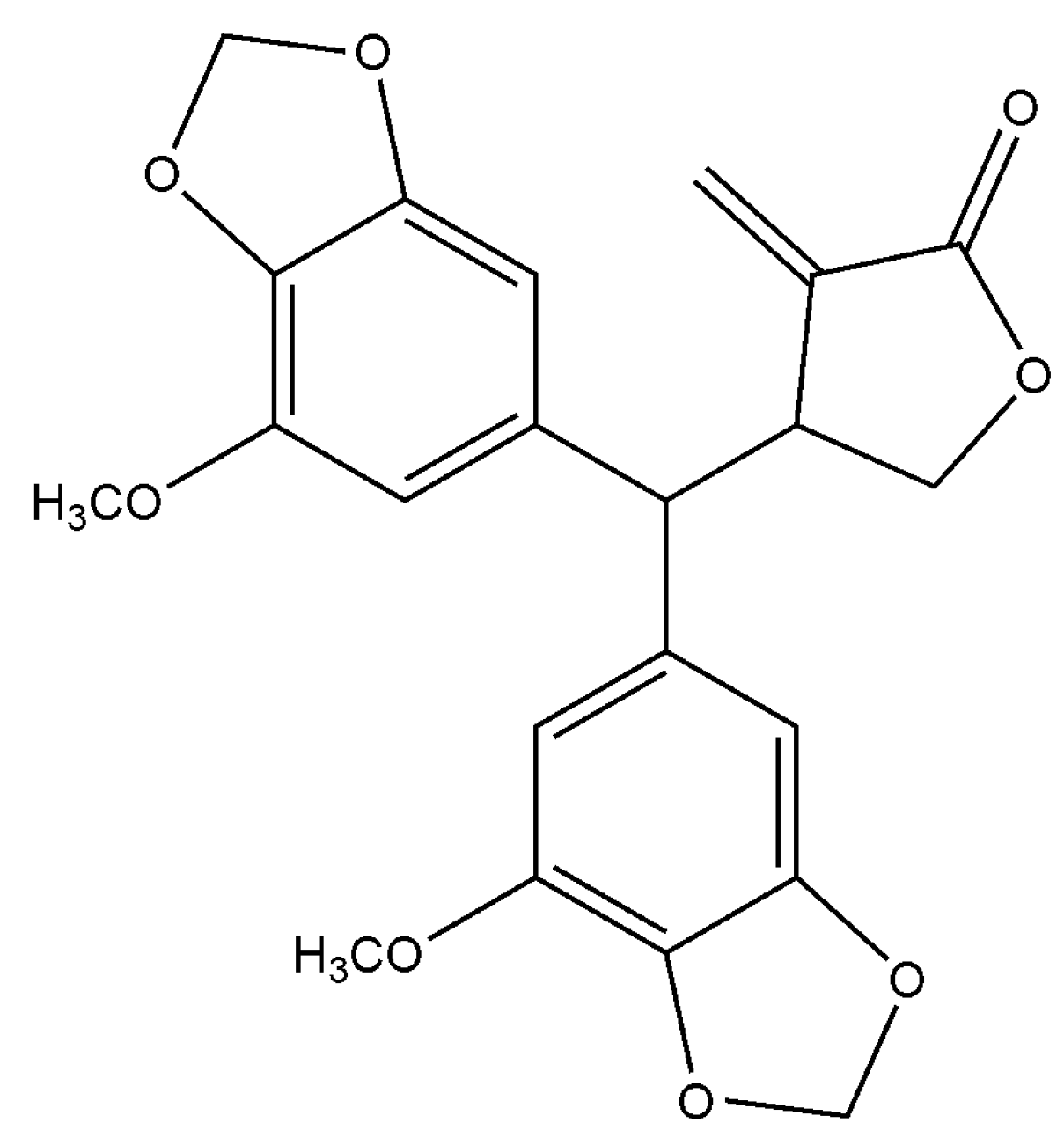
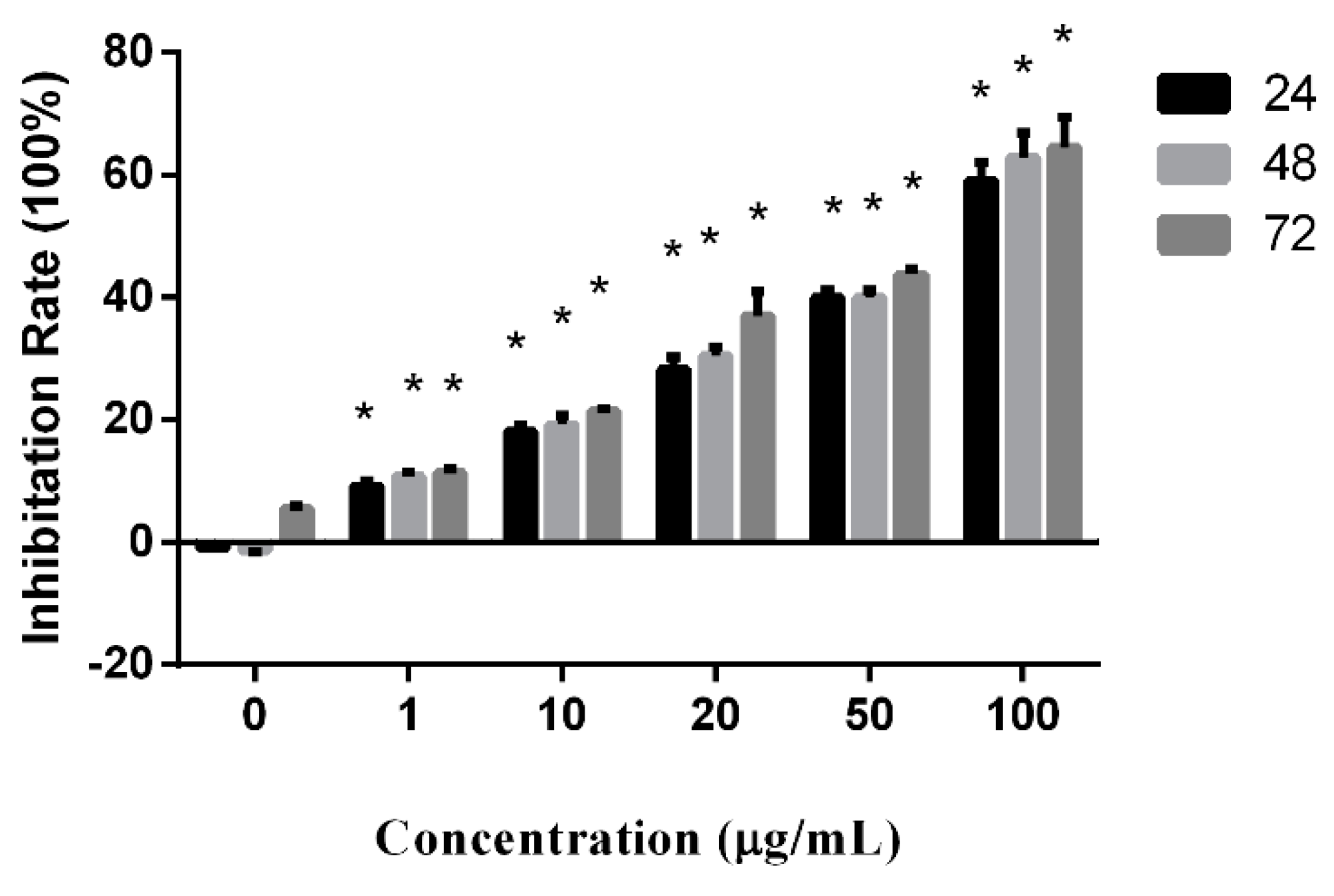
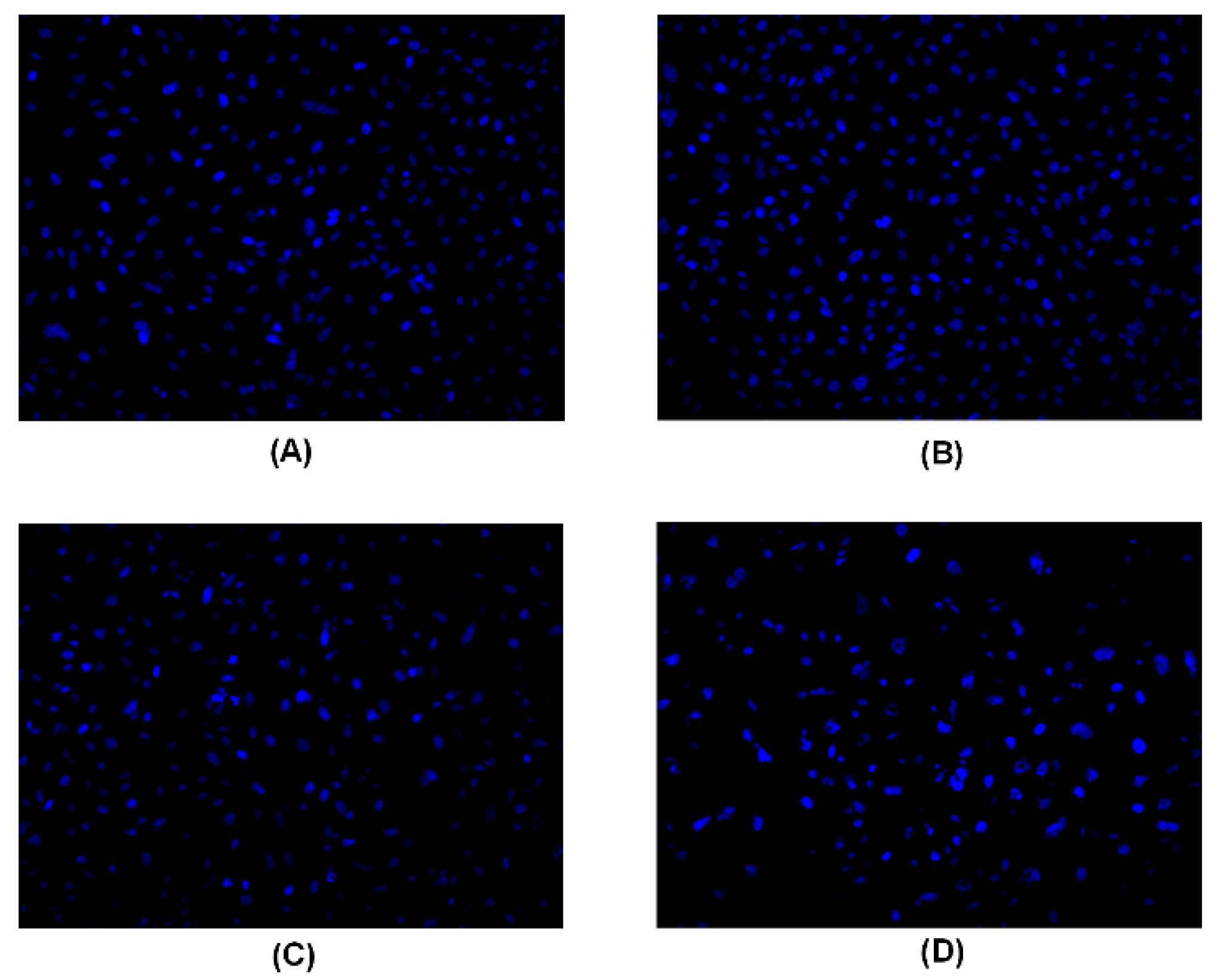
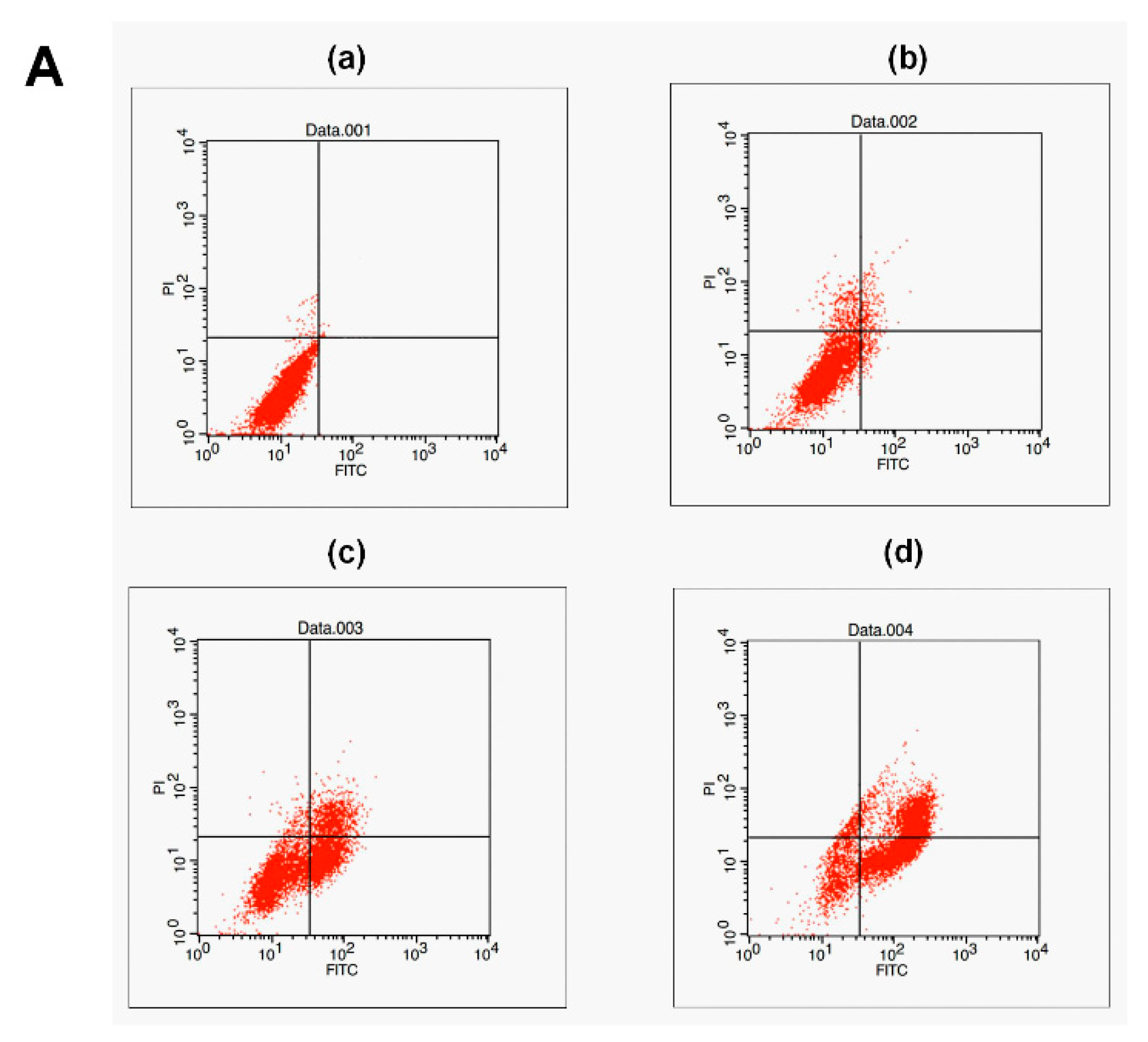
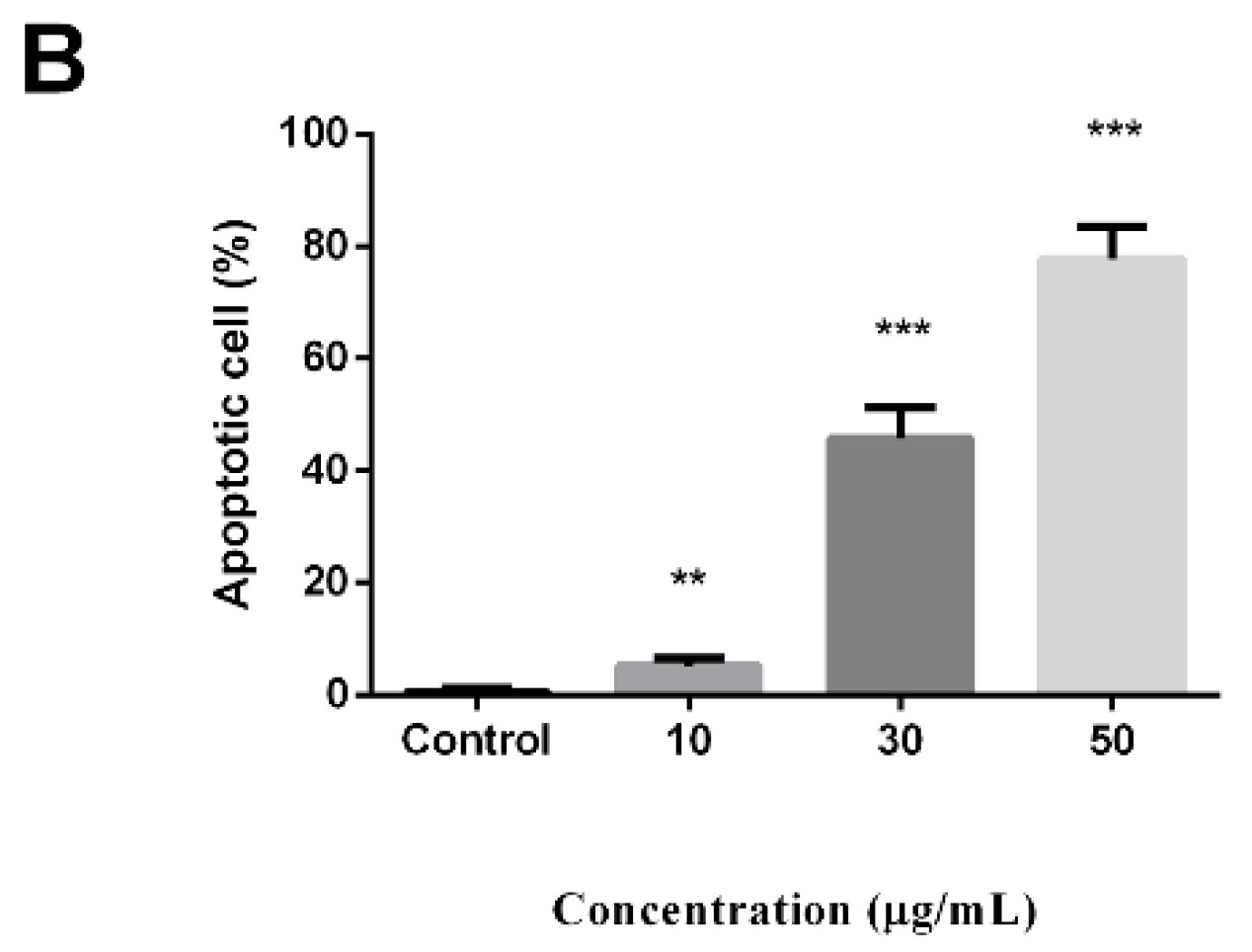
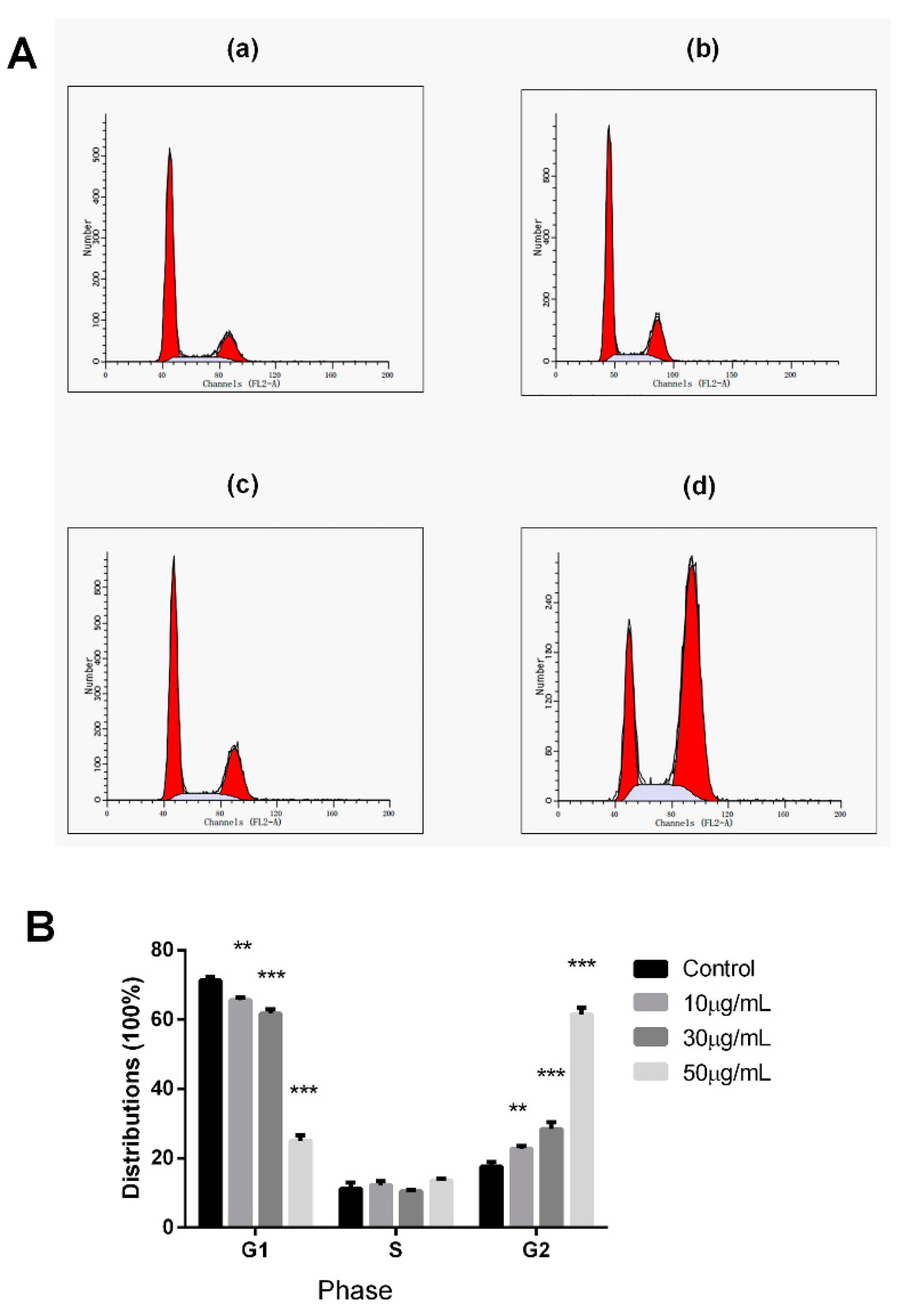
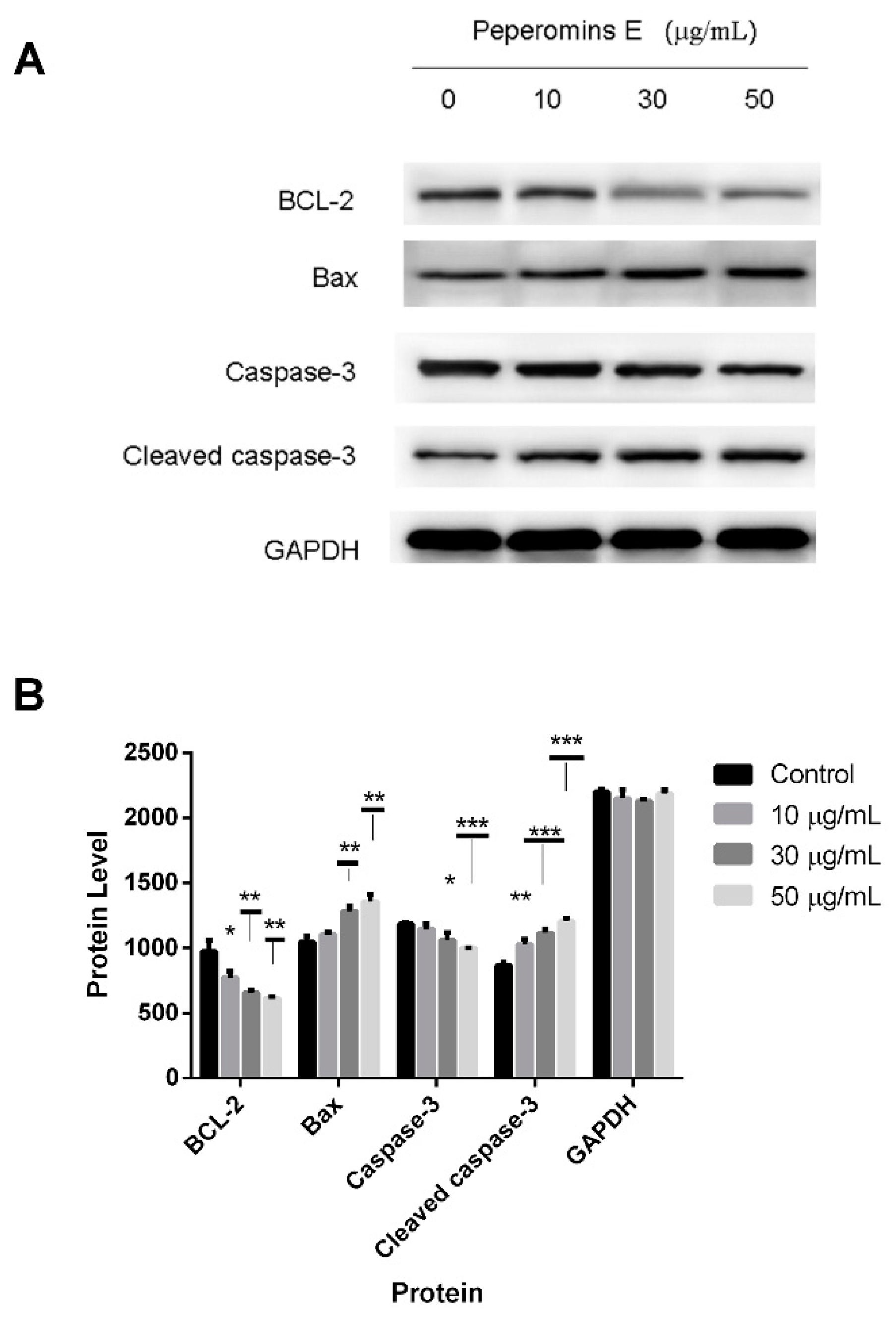
© 2019 by the authors. Licensee MDPI, Basel, Switzerland. This article is an open access article distributed under the terms and conditions of the Creative Commons Attribution (CC BY) license (http://creativecommons.org/licenses/by/4.0/).
Share and Cite
Li, Y.; Pan, J.; Gou, M. The Anti-Proliferation, Cycle Arrest and Apoptotic Inducing Activity of Peperomin E on Prostate Cancer PC-3 Cell Line. Molecules 2019, 24, 1472. https://doi.org/10.3390/molecules24081472
Li Y, Pan J, Gou M. The Anti-Proliferation, Cycle Arrest and Apoptotic Inducing Activity of Peperomin E on Prostate Cancer PC-3 Cell Line. Molecules. 2019; 24(8):1472. https://doi.org/10.3390/molecules24081472
Chicago/Turabian StyleLi, Yunzhi, Jigang Pan, and Meng Gou. 2019. "The Anti-Proliferation, Cycle Arrest and Apoptotic Inducing Activity of Peperomin E on Prostate Cancer PC-3 Cell Line" Molecules 24, no. 8: 1472. https://doi.org/10.3390/molecules24081472
APA StyleLi, Y., Pan, J., & Gou, M. (2019). The Anti-Proliferation, Cycle Arrest and Apoptotic Inducing Activity of Peperomin E on Prostate Cancer PC-3 Cell Line. Molecules, 24(8), 1472. https://doi.org/10.3390/molecules24081472



